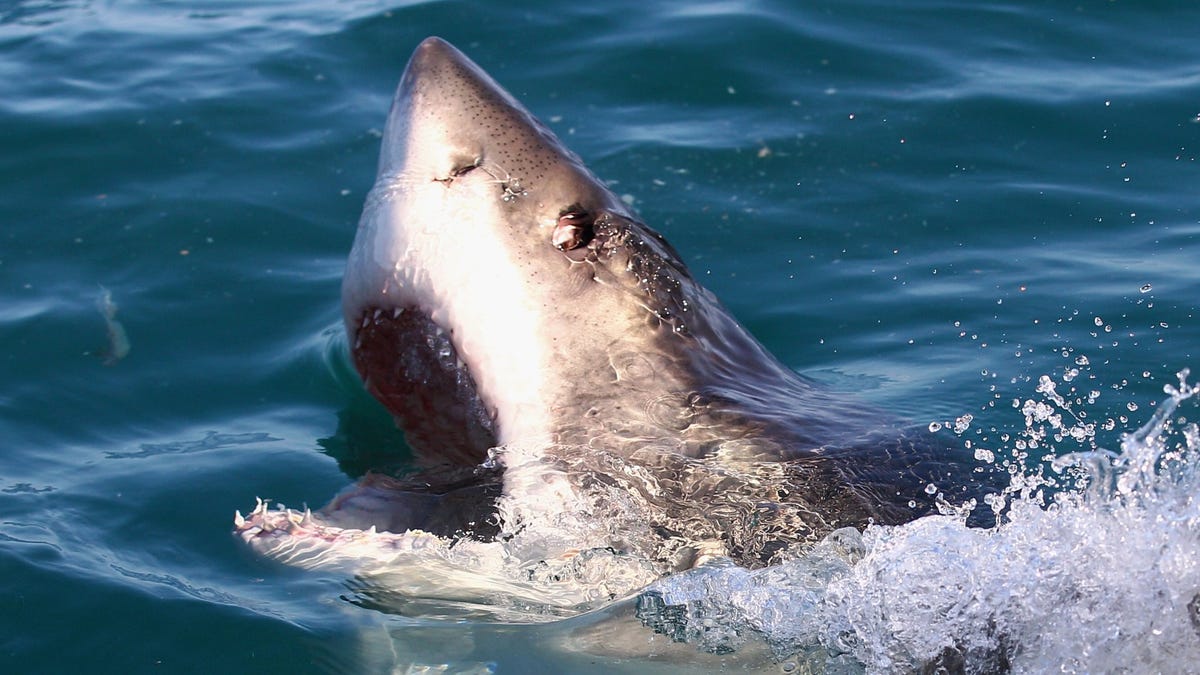While automakers are happy to switch their lineups to hybrid and electric power to cut global emissions, it’s much harder for airlines to slash their carbon footprints. Electric planes may be in the works and sustainable fuels are being trialed, but three European airlines are testing a new way to cut their fuel use: fake shark skin fitted to their planes.
German carrier Lufthansa and its subsidiaries have been evaluating a new material on the exterior of its planes to help cut carbon emissions from air travel. The trial saw it fit 17 aircraft with a material that mimics the rough surface of shark skin, catchily named AeroSHARK. The coating reduces drag on the planes meaning that they can fly more efficiently, reports Futurism.
So far, the material has been fitted to Lufthansa and Swiss Airlines planes, which have logged more than 100,000 flight hours. Over that time, they have cut more than 6,000 tons of fuel and cut more than 19,000 tons of carbon emissions from their flights. As a result of the positive results, AeroSHARK is now being added to four Austrian Airlines aircraft, as Futurism reports:
That being said, Lufthsansa’s formulation already seems to provide tangible benefits. Four Boeing passenger planes will be covered with about 9,000 square feet of AeroSHARK riblets, which is expected to reduce drag by about one percent. That may not sound like a lot, but even that tiny margin will make a significant difference over many flights.
The airline claims that over four years, the aircraft will each save about 8,300 metric tons worth of CO2 emissions — the equivalent of 46 flights from Vienna to New York.
It might sound conter-intutitve to rough up the surface of a plane to make it cut through the air smoother, but it’s the same kind of tech that helped Olympic swimmers break countless world records with the super suits developed for the 2012 games.

The material that’s being fitted to Lufthansa’s planes measures just 50 microns, which is thinner than a human hair. It’s covered in minuscule riblets, which reduce the friction between the plane and the air by minimizing the turbulent boundary layer that surrounds the plane. An explainer on how the tech works was published by Ars Technica recently:
For instance, mako sharks can swim as fast as 70 to 80 mph, earning them the moniker “cheetahs of the ocean.” Back in 2019, scientists at the University of Alabama determined one major factor in how mako sharks are able to move so fast: the unique structure of their skin, especially the denticles around the flank and fin regions of their bodies. Mako sharks have evolved a distinct passive “bristling” aspect on some of their scales to swim faster. Near regions like the nose, the scales aren’t especially flexible, more like molars embedded in the skin. But near the flanks and fins, the scales are much more flexible.
That has a profound effect on the degree of pressure drag the mako shark encounters as it swims. The denticles of the mako shark can flex at angles more than 40 degrees from its body—but only in the direction of reversing flow (i.e., from tail to nose). This controls the degree of flow separation, similar to the dimples on a golf ball. The dimpling, or scales in the case of the mako shark, help maintain attached flow around the body, reducing the size of the wake.
It’s pretty nifty to see what we’re learning from the animals that will die out if we don’t clean up our planet. And while tech like this won’t be a direct route to sustainable air travel, it’s a step in the right direction. Combine this with sustainable aviation fuels that are being developed around the world as well as the experiments being done to build electric airliners and we might start making progress.

